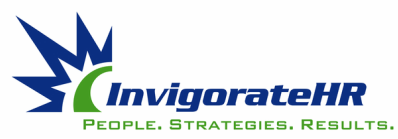|
This month we are featuring Julie Kratz, CEO and Founder of Pivot Point. She is a highly acclaimed leadership trainer who led teams and produced results in corporate America. After experiencing her own career “pivot point,” she developed a process for women leaders build winning plans. Promoting gender equality in the workplace, Julie is a frequent keynote speaker and executive coach. InvigorateHR will partner with Julie for our March 28th webinar, Unconscious Bias: Diversity In Action.  Gender bias is often much more subtle today than the blatant bias we used to hear and see in the workplace 20 years ago. Yet, what we find is that bias is still there, it is just not as overt as it once was. It is unconscious. It is thought, not shared. We are likely not even aware of our biases. This makes it harder to detect. To understand it better, it helps to break down conscious vs. unconscious bias. It looks something like this: Conscious bias:
Our brains love assumptions
Our brains conserve energy. To be efficient with energy, our brain often goes on autopilot. Have you ever been driving to the grocery store and somehow ended up at your office? That is because our brains are trained to recognize patterns, and then make an assumption based on past experience or association, then act. This happens quickly. The more energy the brain conserves, the more it has for those “fight” or “flight” survival moments. That is our primitive brain’s way of protecting our very survival. Something that was quite handy when living in the wild, yet not as helpful in today’s modern workplace. Assumptions guide our unconscious thinking. To test your own assumptions, ask yourself these questions:
How unconscious bias affects gender today According to Joan C. Williams’ What Works for Women at Work, there are four key unconscious biases that hold women back today:
How do you close the gap on bias? Up your unconscious bias game. First, you have to be aware of your own bias. An excellent free assessment is available through Harvard here. We all have bias. As a student of this work, I have my own bias. Be a part of their research and assess your own bias. Then, armed with this data, seek out areas where you can challenge your assumptions. Ask yourself the questions above in the moment, and call out others when they make decisions based on assumptions. In fact, I just got certified in unconscious bias with the Cultural Intelligence Center. Their tools help organizations shift the assumption based thinking to create positive change for diversity and inclusion. Written by: Julie Kratz, Pivot Point CEO and Founder Comments are closed.
|
Archives
December 2024
|

 RSS Feed
RSS Feed